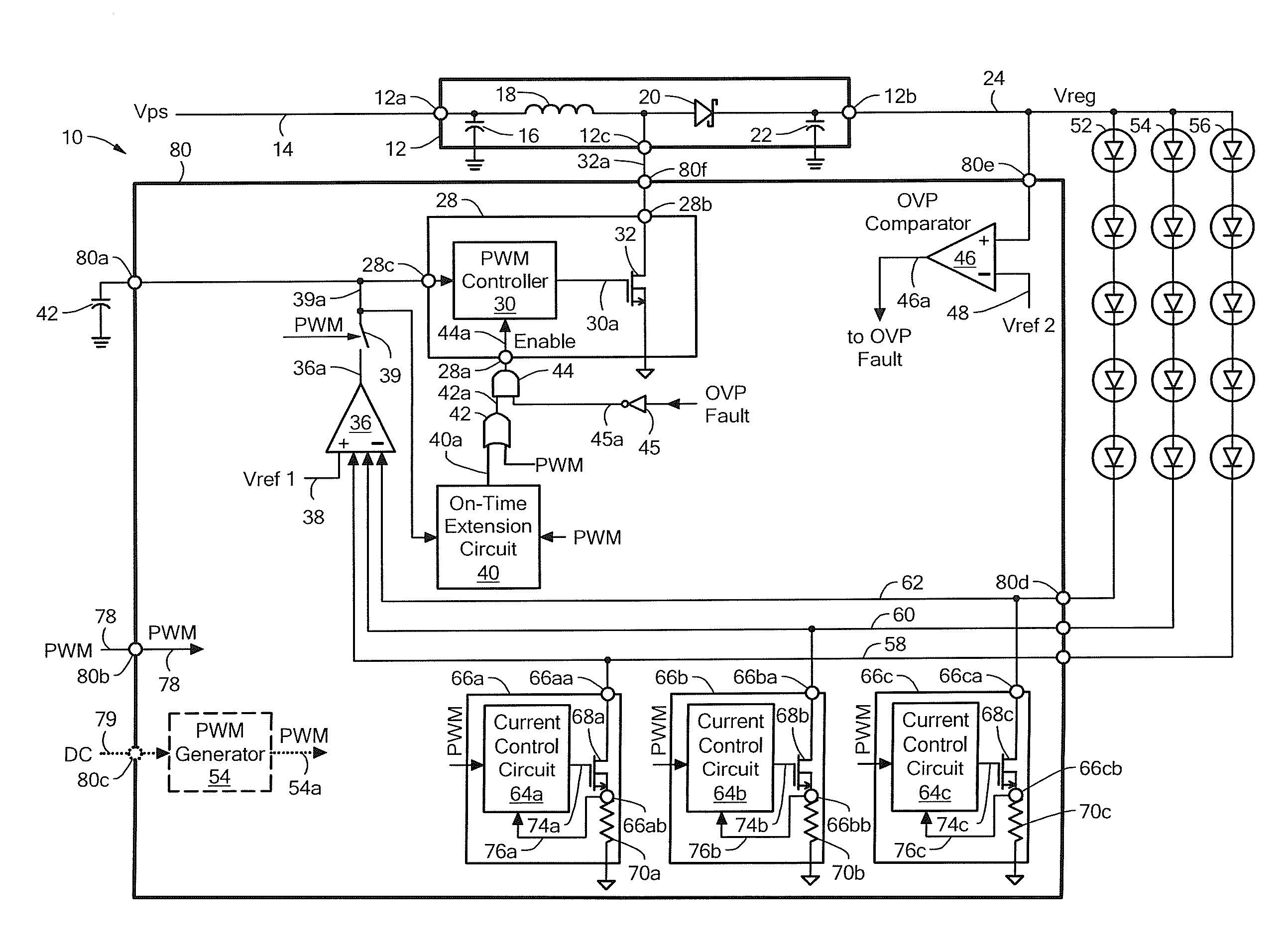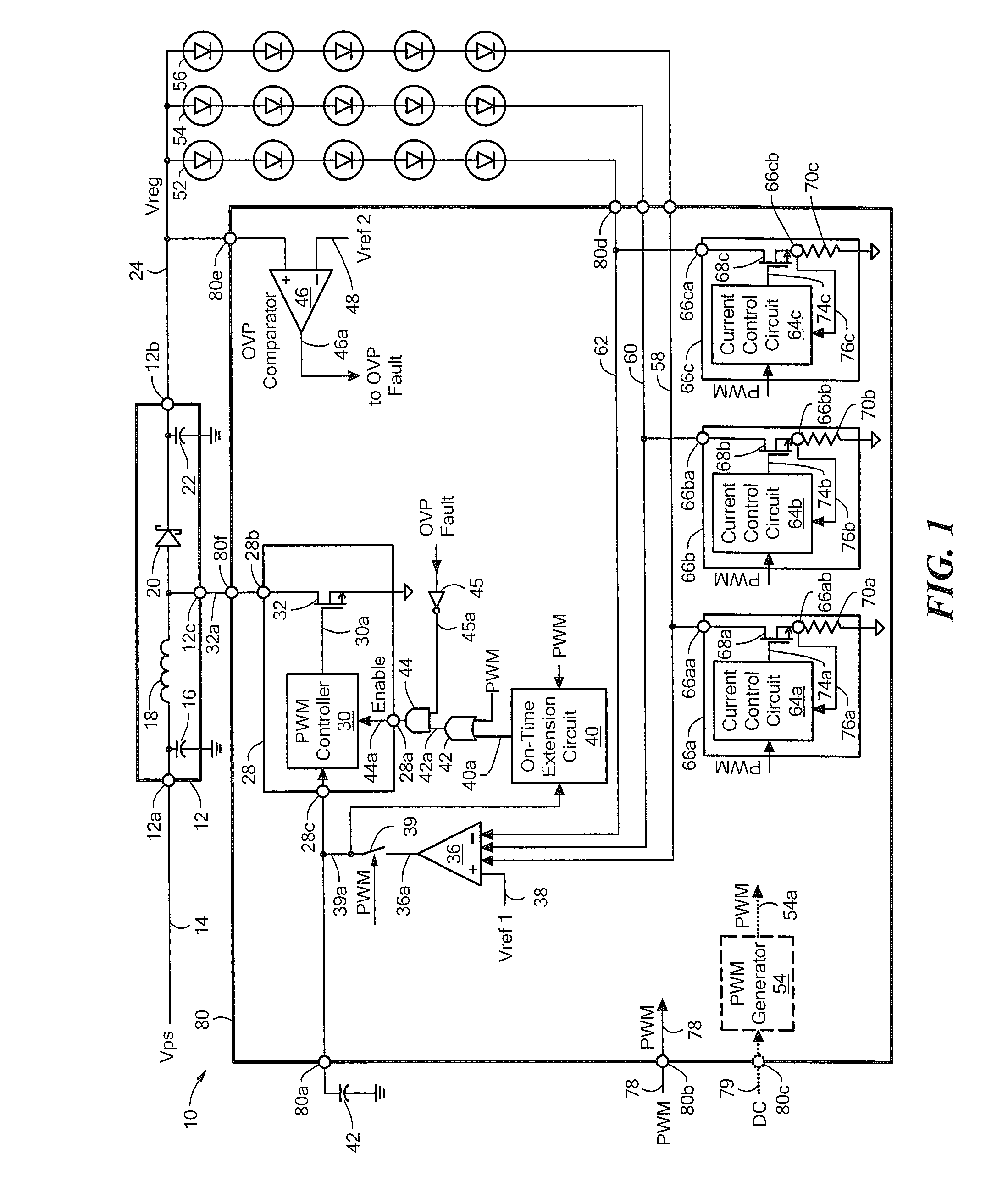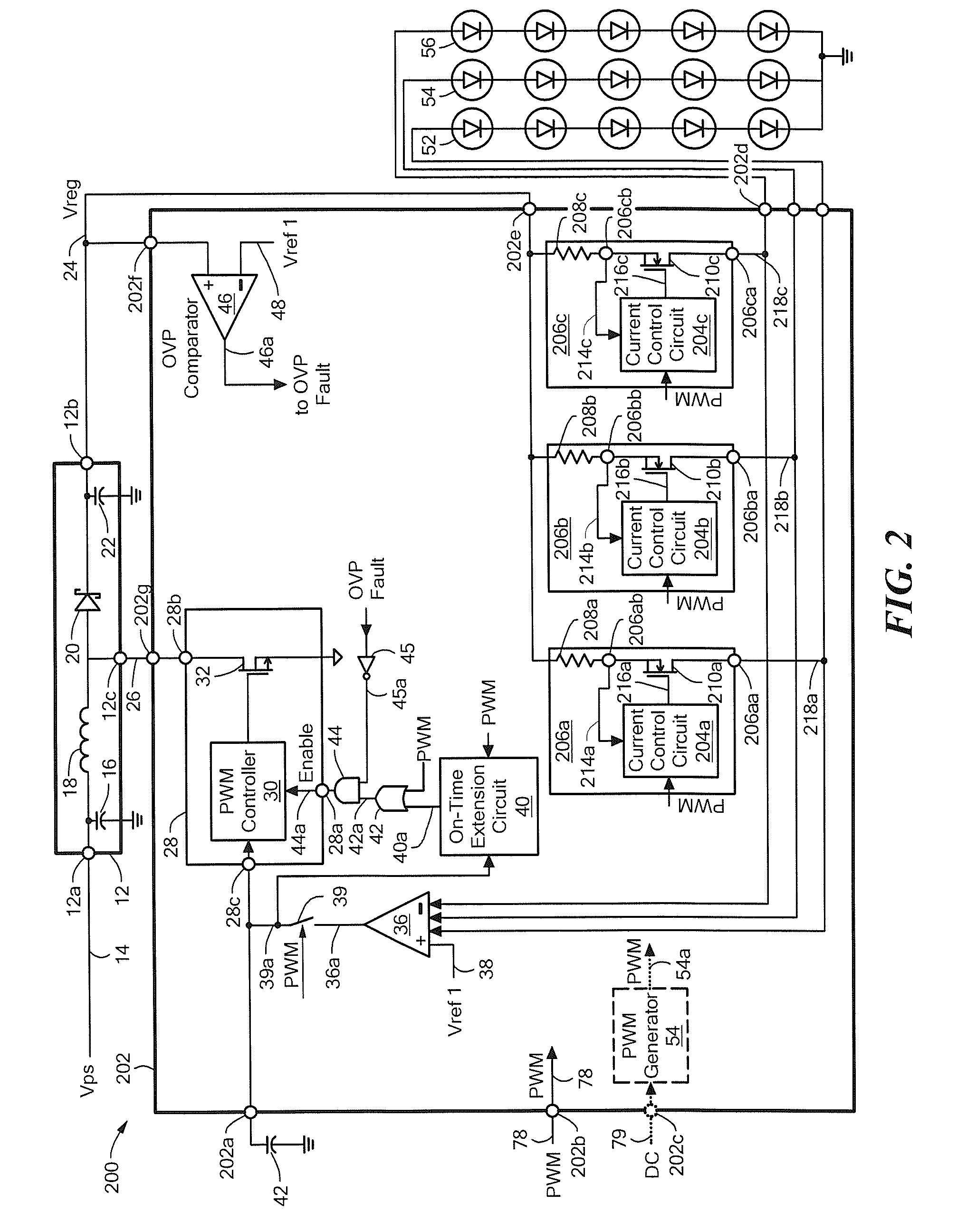Electronic Circuits and Techniques for Improving a Short Duty Cycle Behavior of a DC-DC Converter Driving a Load
a technology of dc-dc converter and short duty cycle, applied in the direction of electric variable regulation, process and machine control, instruments, etc., can solve the problems of unnecessarily high power dissipation of switching regulator, dc-dc converter without feedback control, dc-dc converters are unable to achieve very short duty cycle times when switched on and off, etc., to achieve a wide dynamic range of power
- Summary
- Abstract
- Description
- Claims
- Application Information
AI Technical Summary
Benefits of technology
Problems solved by technology
Method used
Image
Examples
Embodiment Construction
[0027]Before describing the present invention, some introductory concepts and terminology are explained. As used herein, the term “boost switching regulator” is used to describe a known type of switching regulator that provides an output voltage higher than an input voltage to the boost switching regulator. While a certain particular circuit topology of boost switching regulator is shown herein, it should be understood that boost switching regulators have a variety of circuit configurations. As used herein, the term “buck switching regulator” is used to describe a known type of switching regulator that provides an output voltage lower than an input voltage to the buck switching regulator. It should be understood that there are still other forms of switching regulators other than a boost switching regulator and other than a buck switching regulator, and this invention is not limited to any one type.
[0028]DC-DC voltage converters (or simply DC-DC converters) are described herein. The ...
PUM
 Login to View More
Login to View More Abstract
Description
Claims
Application Information
 Login to View More
Login to View More - R&D
- Intellectual Property
- Life Sciences
- Materials
- Tech Scout
- Unparalleled Data Quality
- Higher Quality Content
- 60% Fewer Hallucinations
Browse by: Latest US Patents, China's latest patents, Technical Efficacy Thesaurus, Application Domain, Technology Topic, Popular Technical Reports.
© 2025 PatSnap. All rights reserved.Legal|Privacy policy|Modern Slavery Act Transparency Statement|Sitemap|About US| Contact US: help@patsnap.com



